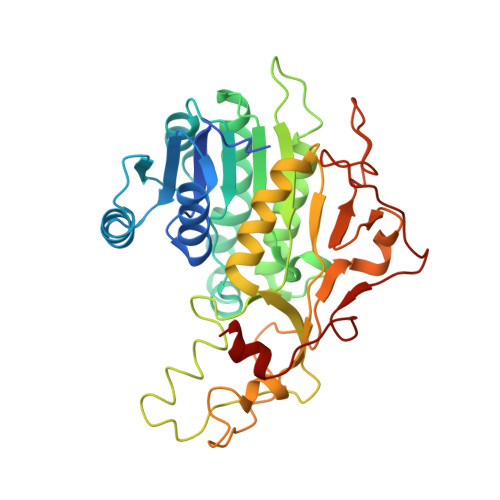Structural Studies of FlaA1 from Helicobacter pylori Reveal the Mechanism for Inverting 4,6-Dehydratase Activity.
Ishiyama, N., Creuzenet, C., Miller, W.L., Demendi, M., Anderson, E.M., Harauz, G., Lam, J.S., Berghuis, A.M.(2006) J Biological Chem 281: 24489-24495
- PubMed: 16651261
- DOI: https://doi.org/10.1074/jbc.M602393200
- Primary Citation of Related Structures:
2GN4, 2GN6, 2GN8, 2GN9, 2GNA - PubMed Abstract:
FlaA1 from the human pathogen Helicobacter pylori is an enzyme involved in saccharide biosynthesis that has been shown to be essential for pathogenicity. Here we present five crystal structures of FlaA1 in the presence of substrate, inhibitors, and bound cofactor, with resolutions ranging from 2.8 to 1.9 A. These structures reveal that the enzyme is a novel member of the short-chain dehydrogenase/reductase superfamily. Additional electron microscopy studies show the enzyme to possess a hexameric doughnut-shaped quaternary structure. NMR analyses of "real time" enzyme-substrate reactions indicate that FlaA1 is a UDP-GlcNAc-inverting 4,6-dehydratase, suggesting that the enzyme catalyzes the first step in the biosynthetic pathway of a pseudaminic acid derivative, which is implicated in protein glycosylation. Guided by evidence from site-directed mutagenesis and computational simulations, a three-step reaction mechanism is proposed that involves Lys-133 functioning as both a catalytic acid and base.
- Department of Biochemistry and Department of Microbiology and Immunology, McGill University, Montreal, Quebec.
Organizational Affiliation:



















